Tinglayan, Kalinga: A Memento From The Mambabatok of Buscalan

Being raised in a traditional family wherein tattoos were considered taboo, getting one flashes a red light – that was before I had my rear shoulder down to the elbow inked with a text inscribed in Baybayin, a pre-Hispanic Philippine writing system. Many of our folks (not everyone, of course) believed these we consider as “art” today were, back then considered as the marks of a gang or probably an ex-convict who committed theft, fraud, or worse, murder – a menace in society. But during the tribal war era in the Cordilleras, slaying the enemy earns the brave warrior valor and respect illustrated through symbols marked in his skin. These markings were crafted by the tribe’s mambabatok. This was my journey to the village of Buscalan where I encountered the “last” Kalinga traditional tattoo maker, Fang-Od, who gave me a souvenir that I will remember for as long as I breathe.
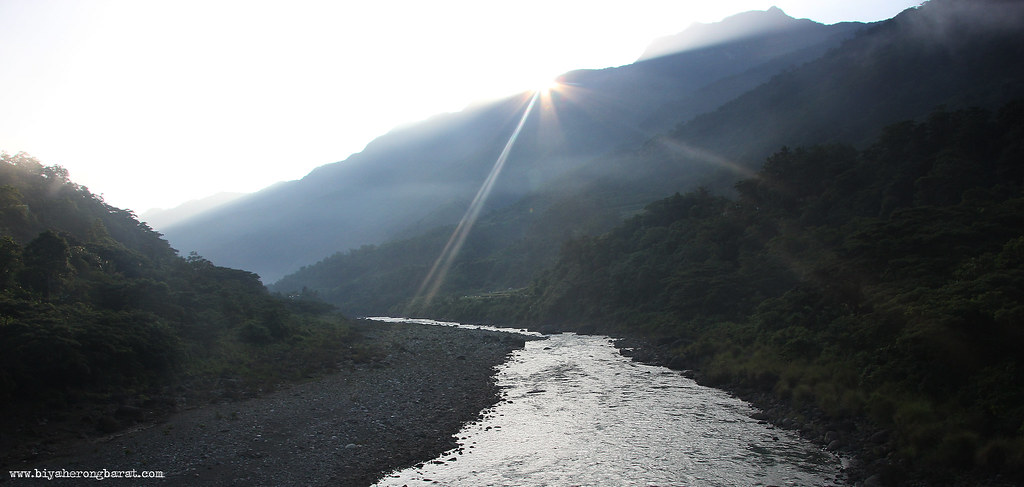 Good morning from Sleeping Beauty mountains.
Good morning from Sleeping Beauty mountains.
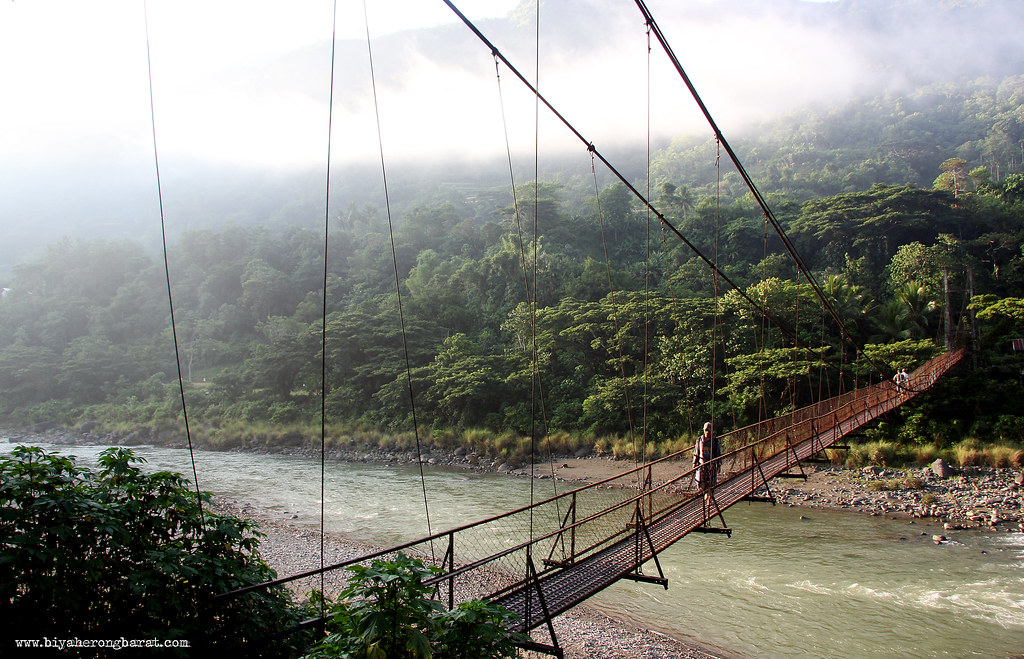 Misty morning in Luplupa Village.
Misty morning in Luplupa Village.
Beams of light peeked through the ridges of the Sleeping Beauty mountains, still enveloped in mist – a beautiful scenery that I remember standing halfway across the bridge as I bid goodbye to the quaint Luplupa Village. Together with our guide, Kuya Amfat, we stood along the main highway waiting for the 7AM monstrous bus-looking jeepney bound for Bontoc.
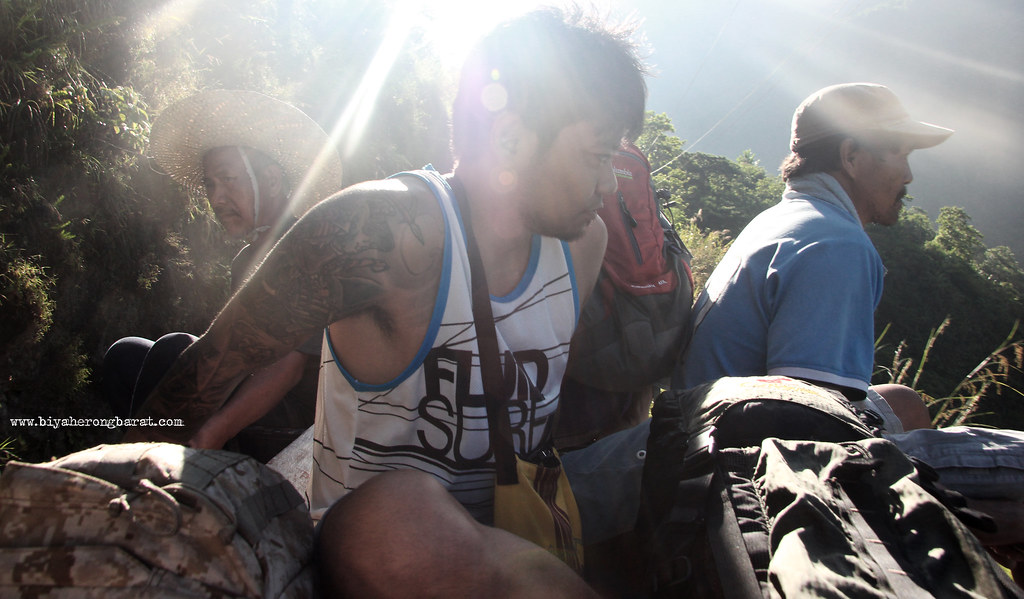 On the roof of the bus-looking jeepney.
On the roof of the bus-looking jeepney.
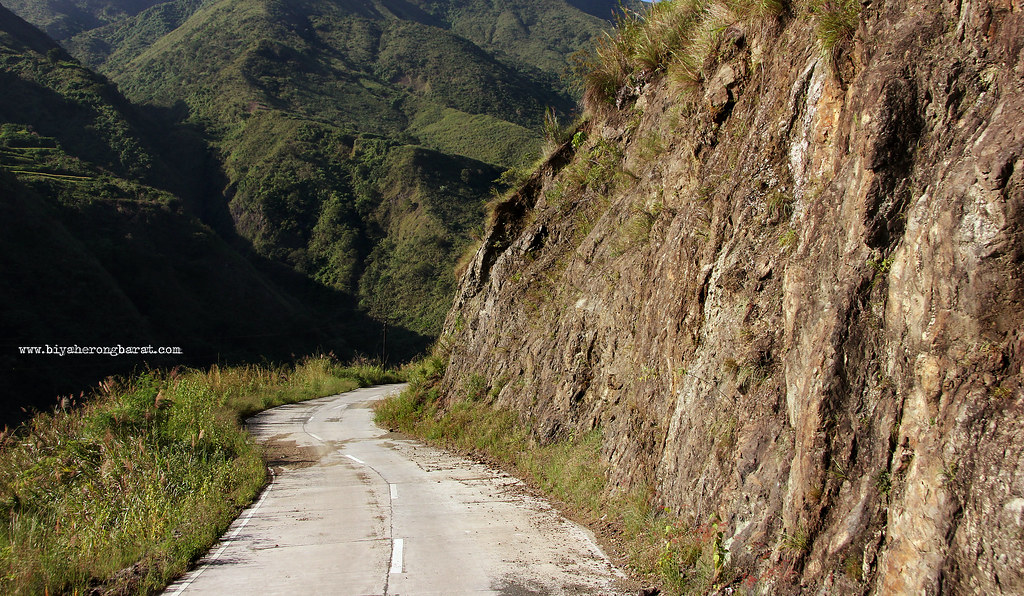 Among the few paved roads connecting Mountain Province and Kalinga.
Among the few paved roads connecting Mountain Province and Kalinga.
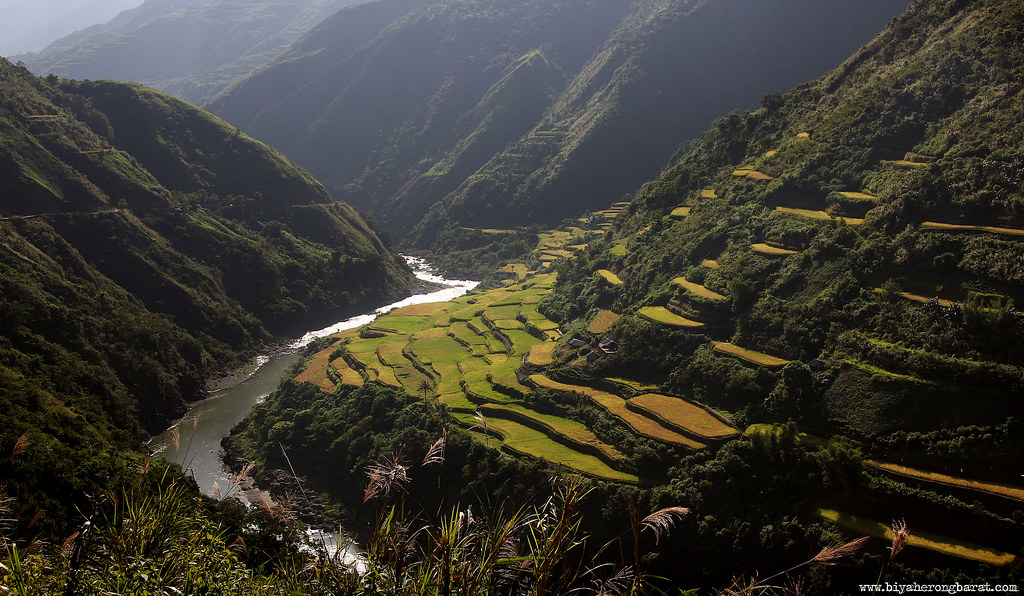
Kalinga’s majestic rice terraces.
 Sharp curves and hairpin turns as we approach Bugnay Village.
Sharp curves and hairpin turns as we approach Bugnay Village.
Riding top load for two hours on rugged cliff side roads with landslide paths on one side and the drop on the other doesn’t sound kind of fun, yeah? On occasion, whilst sitting on the jeepney’s roof, you could feel the vehicle tilt as if it’s about to fall and landing on the local tabloid the next day. Nevertheless, marveling on the breath-taking mountainous landscapes of Kalinga got my mind off the dangers. Eventually, you’ll get used to those bumps and tilts.
 Bugnay Village, another river side settlement in Kalinga.
Bugnay Village, another river side settlement in Kalinga.
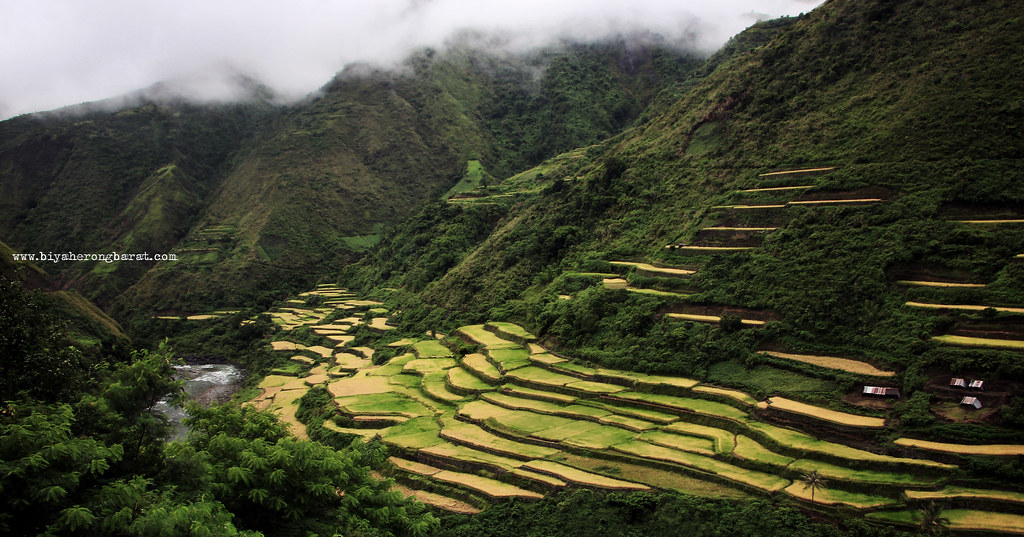 A cluster of rice terraces in Bugnay.
A cluster of rice terraces in Bugnay.
Opposite the National Highway and across the Chico River is Bugnay Village. Among the clusters of rice terraces I’ve seen all over Cordillera’s jagged topography, I think Bugnay’s rice terraces was among the magnificent looking cluster with its paddy fields running along the banks of Chico River, and layering as it goes up the mountain slope. For a better vantage point of the riverside settlement and the rice fields surrounding would be Bugnay Junction, which also happens to be the jump-off point to Buscalan Village.
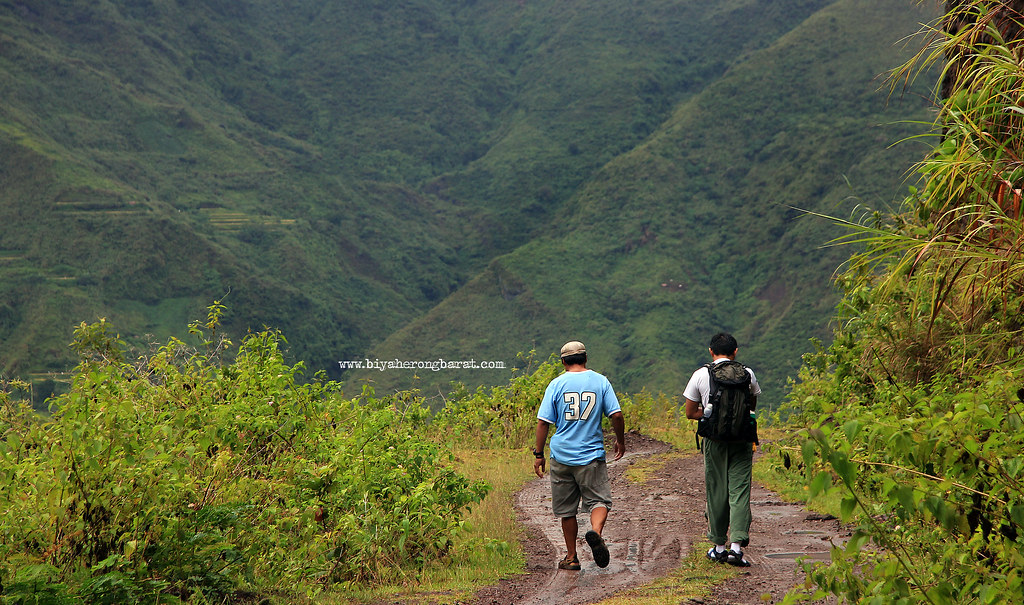 Two-hour hike into the mountains.
Two-hour hike into the mountains.
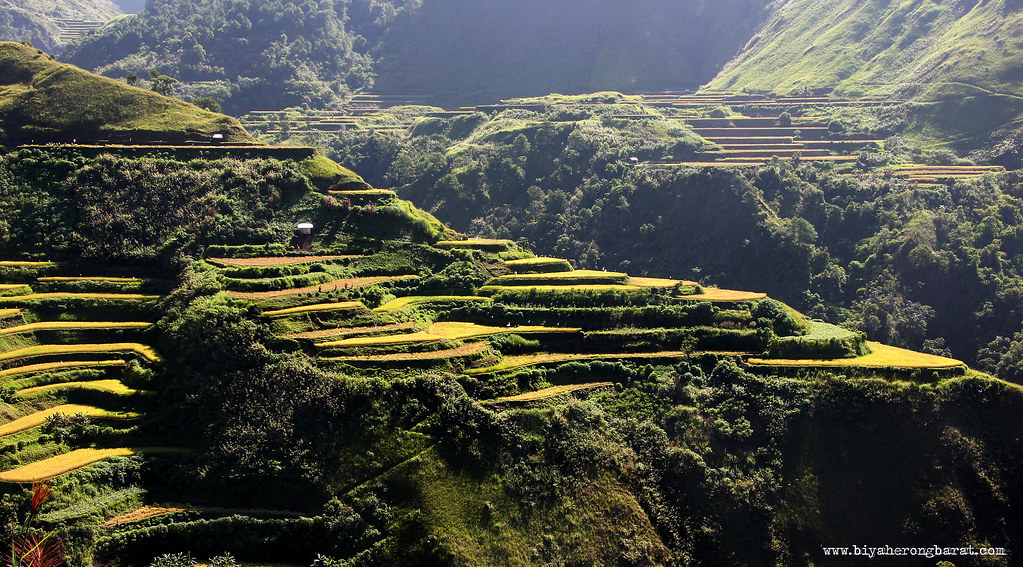 You will also see during the hike Butbut’s (if I’m not mistaken) rice terraces cluster
You will also see during the hike Butbut’s (if I’m not mistaken) rice terraces cluster
 No guides were available during our visit to Kalinga, good thing we found Kuya Amfat.
No guides were available during our visit to Kalinga, good thing we found Kuya Amfat.
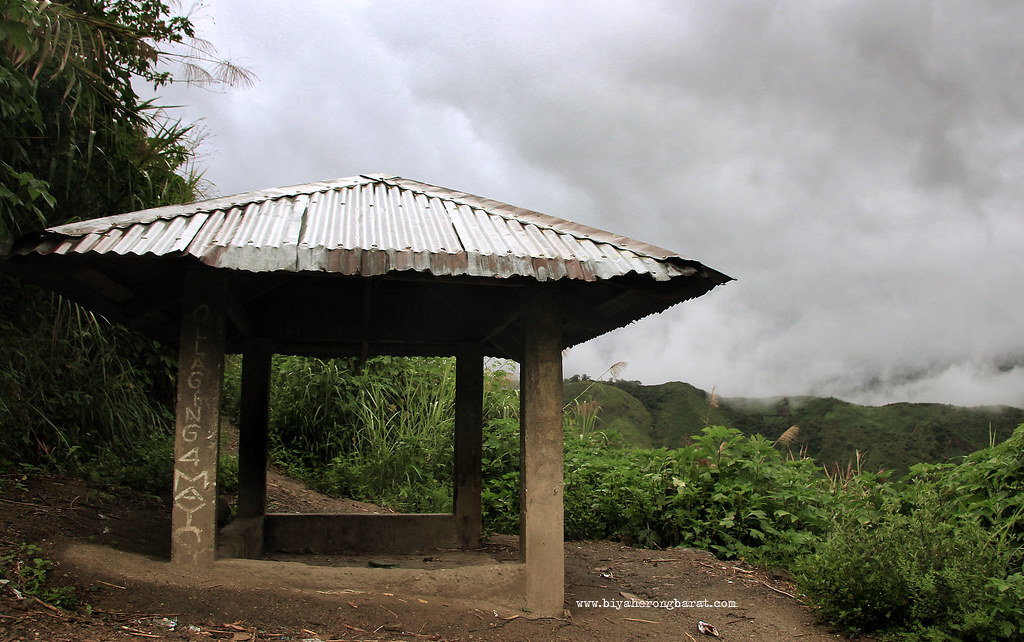 A resting point a few meters just before the village.
A resting point a few meters just before the village.
Isolated by massive mountain ranges and dense jungles, no public transports ply the treacherous road from the Bugnay Junction to Buscalan Village, thus, the safest way probably was on foot. The two-hour hike begins with a dirt road wide enough for a jeepney which turns into a 12-inch wide cemented footpath comprised of with moss-covered inclines and steep staircases. Regardless of the difficulty, this trail unveiled astonishing vistas that got my mind off the pain I was about to endure.
 Elevated wooden house overlooking majestic mountains.
Elevated wooden house overlooking majestic mountains.
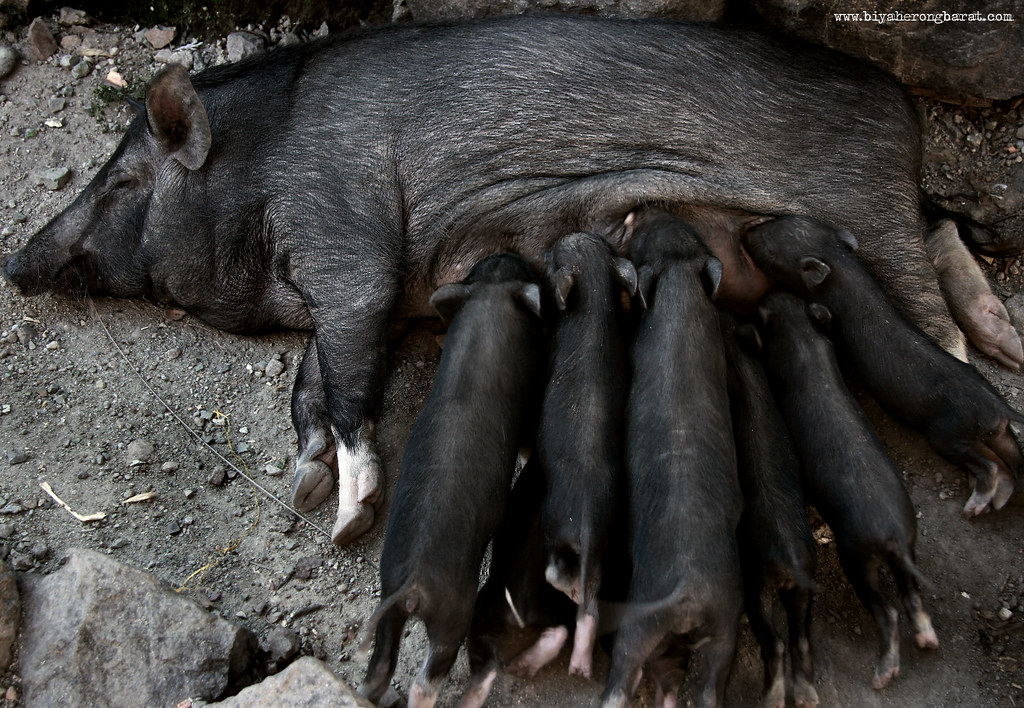 Native pigs roam around everywhere. Don’t worry they are harmless. They’re cute actually.
Native pigs roam around everywhere. Don’t worry they are harmless. They’re cute actually.
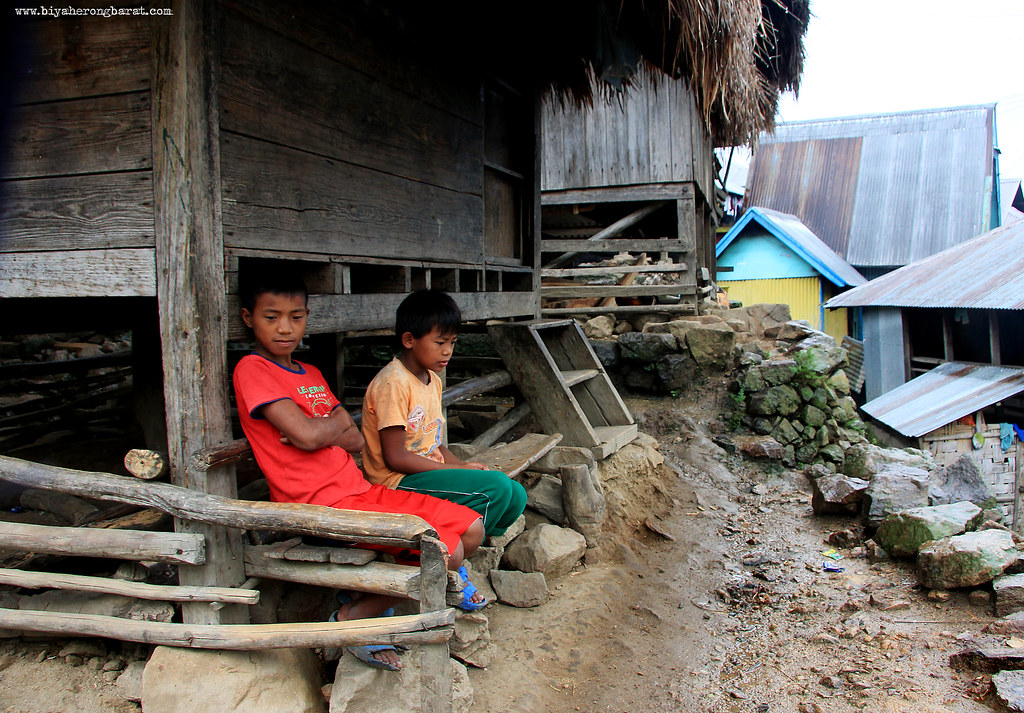 Local kids sat in front their stilted huts.
Local kids sat in front their stilted huts.
Buscalan Village seemed like a labyrinth of stilted houses with livestock such as native pigs and chickens freely roaming around. Getting lost around the village would introduce you to the daily lives of the locale – simple, and far different from our lives back in our concrete jungles. Finding Fang-Od’s house, on the other hand, was quite easy since it’s only a few meters passed the elementary school located on the village’s main entry point.
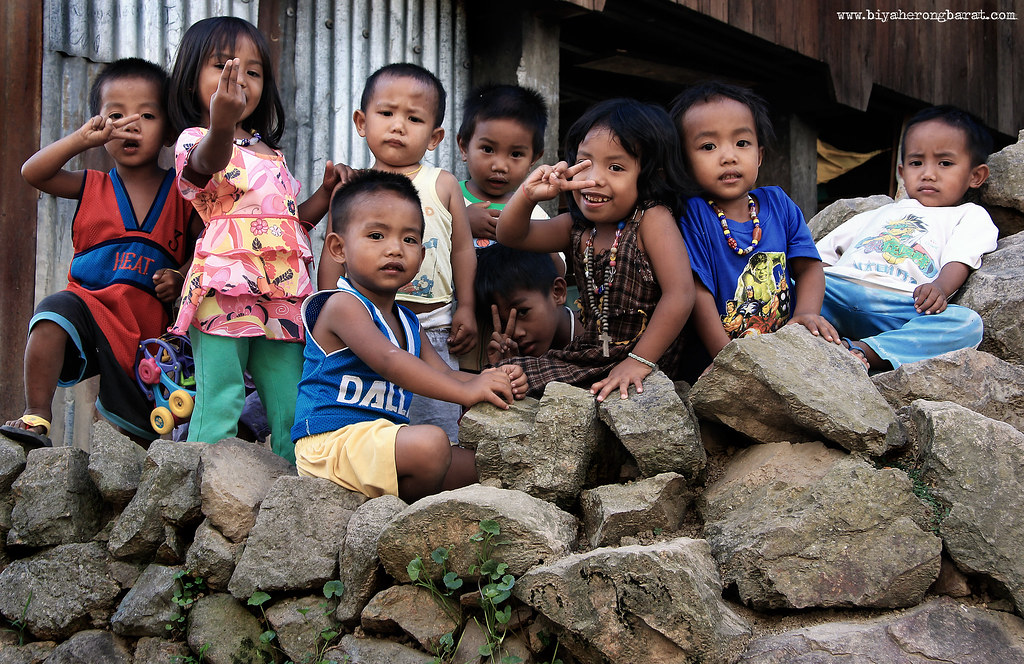 Local kids poses for the camera.
Local kids poses for the camera.
 Having lunch inside Fang-Od’s house.
Having lunch inside Fang-Od’s house.
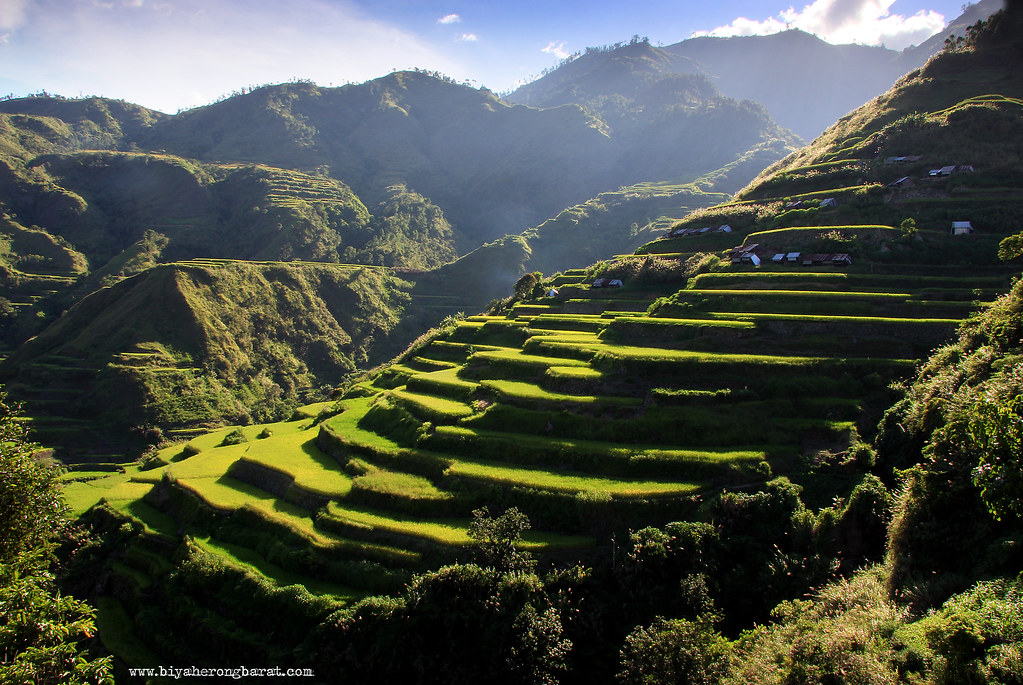 Situated on higher ground, the village has wondrous views of surrounding mountains and rice terraces
Situated on higher ground, the village has wondrous views of surrounding mountains and rice terraces
 Rice fields in Buscalan Village.
Rice fields in Buscalan Village.
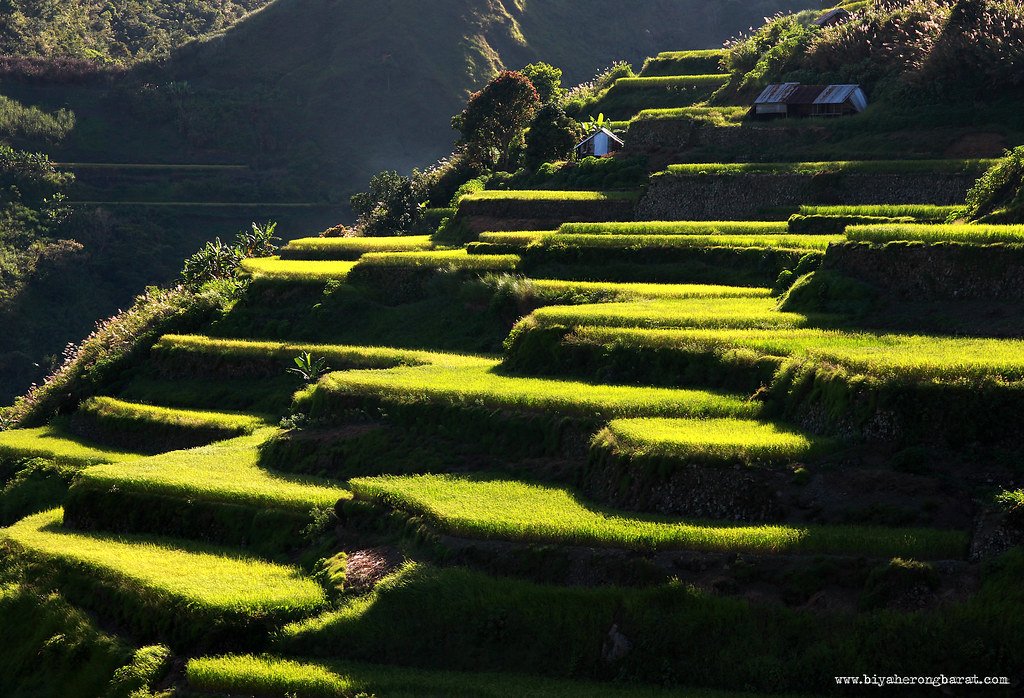 Layers of Buscalan rice paddies.
Layers of Buscalan rice paddies.
During the hike, the question, “Who is Fang-Od?”, just kept my mind afloat. Yes, everyone knew her as the last traditional tattoo maker of Kalinga. The 93-year old elder of Buscalan Village has undeniably gained quite a popularity among tattoo communities, the local travel scene, and even reaching far out across the vast oceans to foreign backpackers. Who is this legendary tattoo maker?
 Buscalan’s traditional tattoo maker, Fang-Od.
Buscalan’s traditional tattoo maker, Fang-Od.
 Native Kalinga coffee for welcome drinks. It’s on the house.
Native Kalinga coffee for welcome drinks. It’s on the house.
I must admit – I was starstruck when I first saw Fang-Od. However, there was no blinding light, nor a chorale of angels playing trumpets and singing in harmony, but a grey haired lady wearing a bandana on her head and sports a black shirt printed with a green five-finger cannabis leaf. She bears a friendly smile while welcoming visitors with a freshly-brewed cup of Kalinga’s native coffee. Though unable to communicate in Tagalog tongue, the warm hospitality can be felt by any visitor through her gestures. One could say that Fang-Od has become quite a celebrity in Kalinga’s indigenous culture, but like many other in remote villages, she lives a simple rural life feeding livestock, pounding coffee beans, and harvesting crops – that is when she’s not holding a pair of bamboo sticks and in “Mambabatok mode”.
 Tattooing using sticks, thorns, and charcoal.
Tattooing using sticks, thorns, and charcoal.
 Memoirs from Fang-Od’s previous visitors.
Memoirs from Fang-Od’s previous visitors.
If conventional tattoo uses electric-powered machines, the traditional tattoo artist called a Mambabatok utilizes a pair of bamboo sticks, while those skin-piercing needle/s are replaced with a single citrus thorn. Those permanent markings came from pine soot instead of regular tattoo ink. These tools in the hands of of the Mambabatok equipped with an exquisite backhand tattooing technique are the key elements to the the thousand-year old cultural practice called “Batok”.
 The heavier the tattoo, the more beautiful.
The heavier the tattoo, the more beautiful.
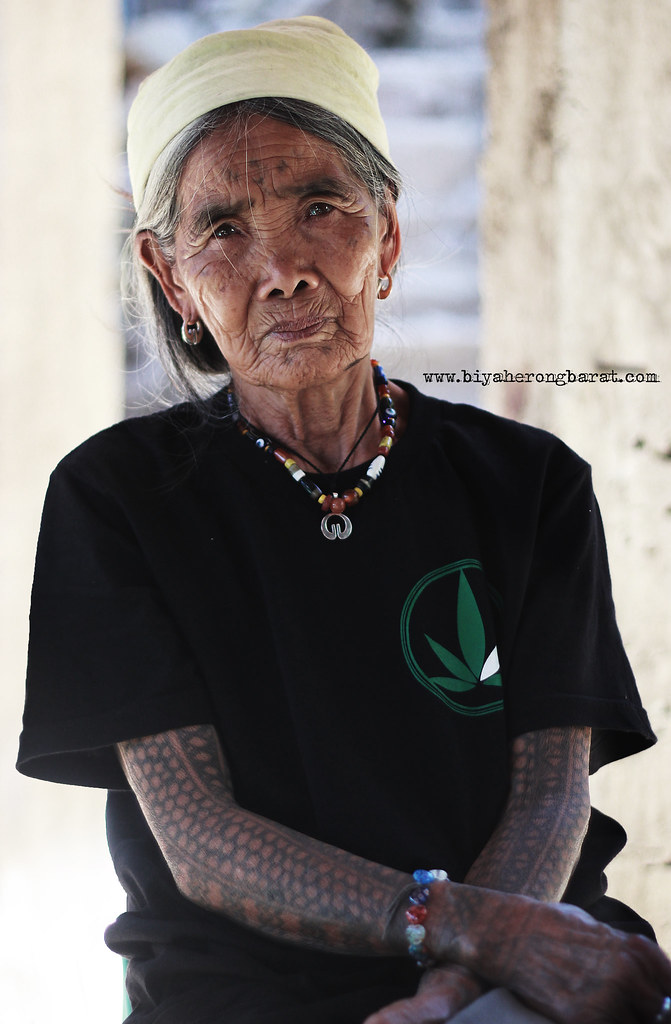 All tattooed women of the Cordilleras wore them with pride.
All tattooed women of the Cordilleras wore them with pride.
Back then during the “dark ages” of headhunting and tribal wars, these skin-deep markings symbolize rank, power, and respect among warriors. Some tattoos were believed to protect the individuals from evil spirits which may cause sickness. For females, lasses were transformed to lovely ladies through this tattoos which were merely ornaments that beautifies these women. These are like the modern day bracelets, earrings, and necklaces, but of course, are irremovable. The painstaking art of tattooing has played a major role in culture and tradition, not only in Kalinga, but also the many peoples of the Cordillera, and we’re about to get a taste of this bloody and painful tradition. I volunteered first, not out of bravery, but to avoid being more nervous than I currently was.
 Fang-Od prepares the ink made of pine soot.
Fang-Od prepares the ink made of pine soot.
 She uses a strand of straw as stencil. (Photo by Mong Cinco)
She uses a strand of straw as stencil. (Photo by Mong Cinco)
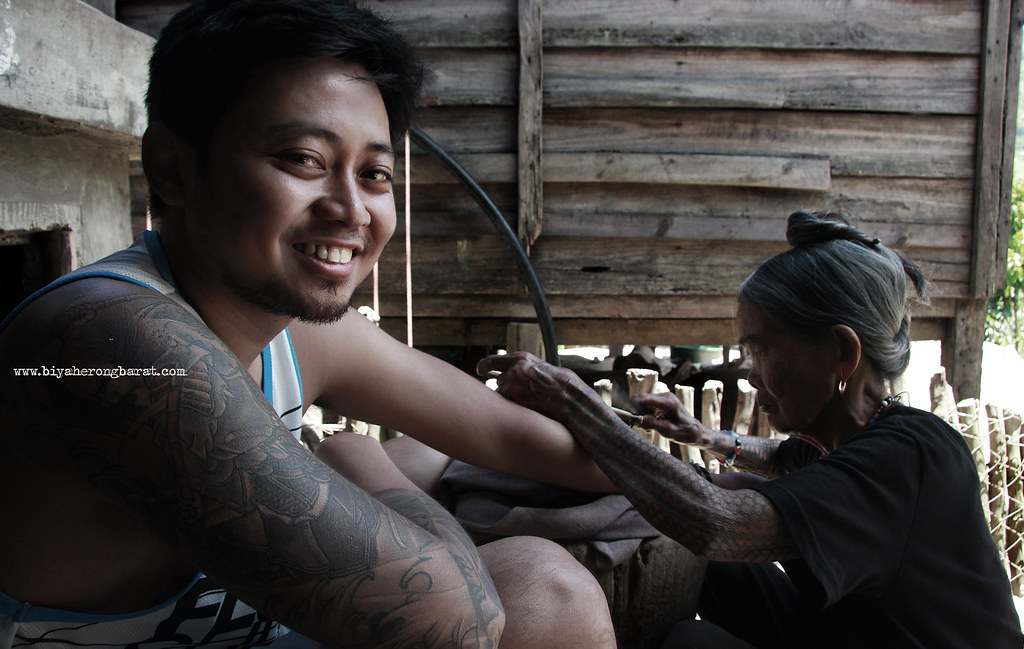 Mong, just about minutes into the tattooing.
Mong, just about minutes into the tattooing.
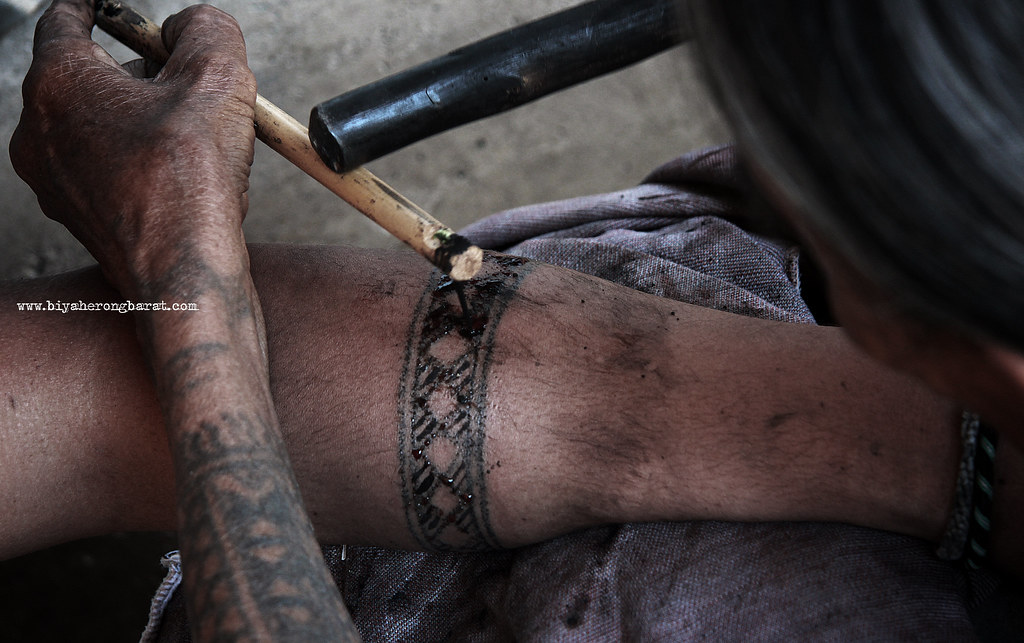 There’s the swelling.
There’s the swelling.
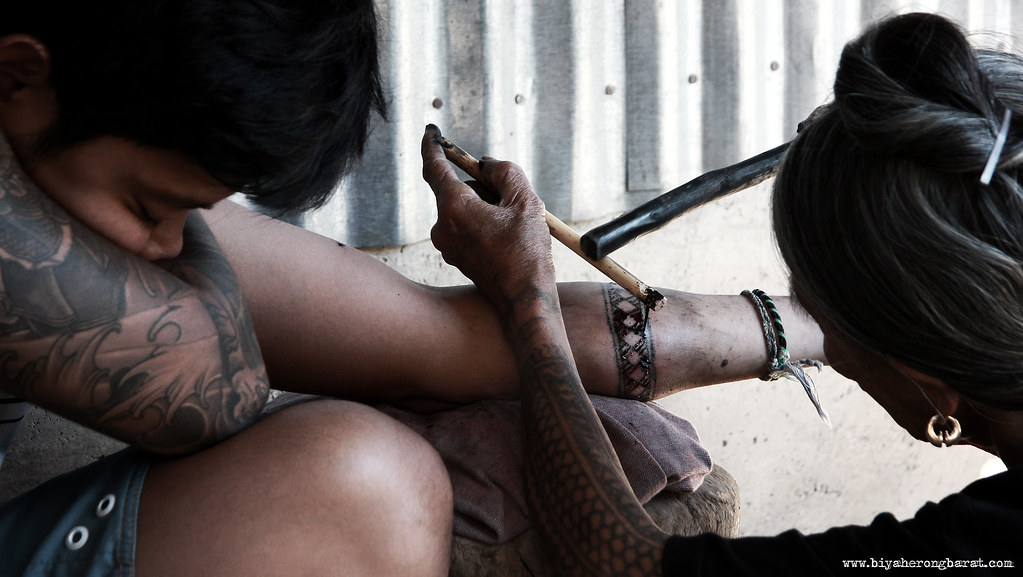 …and there’s Mong, after almost 3 hours.
…and there’s Mong, after almost 3 hours.
First thing everyone asked when I got back was, “Did it hurt?”, I said, “Yes!” But surprisingly, I think the pain was much more manageable than the regular machine tattoo, especially when the numbing begins. It’s either the “Batok” process and the tools used that creates a placebo effect which looks really intimidating, or it’s just me, my low pain tolerance with needles, and the blood. Nonetheless, I still find it painful.
 That’s me right there during the entire process. I can’t even look at the blood. (Photo by Mong Cinco)
That’s me right there during the entire process. I can’t even look at the blood. (Photo by Mong Cinco)
So if it hurt, why did I do it then, you might ask. Why travel hundreds of kilometers and trek high altitudes just to get a simple tattoo wherein I could just get a copy of the design and go to a nearby tattoo shop which is more convenient?
 Fang-Od tattoos Mong.
Fang-Od tattoos Mong.
 Mong’s rice bundle tattoo.
Mong’s rice bundle tattoo.
In my own personal opinion, delving into the roots of the our country’s culture and traditions takes more than just books and Google. Knowledge comes best from real life experiences – living it, breathing it, eating it, or even permanently embedding it on my skin. The agonizing process of the batok represents the long arduous journey to reach this isolated village and understanding the way of life back then, the pine soot ink was the knowledge and the enlightenment that fed my mind and my soul, and Fang-Od, an embodiment an old tradition from the peoples of Cordillera region, facing the brink of extinction. But with her apprentice, her niece, Grace, and the previous efforts of NGO’s, and LGU’s by promoting the Kalinga Batok Festival, this tradition will live for many more centuries.
 My bloodied and swollen forearm after an hour and a half of batok.
My bloodied and swollen forearm after an hour and a half of batok.
One lifetime may not be enough to learn the diverse cultures and traditions of the Filipino people, but I hope to learn as much as I can while I walk the surface of the earth. And as I walk, I will proudly wear Fang-Od’s memento, and tell the world her story, and the story of Kalinga’s tattooed culture.
Thank you, Fang-Od for giving us food and shelter during our visit, and thank you to all the people we met who warmly welcomed us in their community.
=========================================================================
Here are some fast facts that may help you on your trip:
1. The first trip from Tinglayan to Bontoc leaves between 7AM and 8AM. Be on the highway and wait for the jeepney.
2. Fare from Tinglayan to Bugnay Junction cost P20.00 each.
3. Wear comfortable footwear for the hike, and bring a scarf or a jacket for the chilly nights in the mountain if you’re spending the night.
4. Bring enough water.
5.For a guide, you could contact Kuya Gilbert (0908 479 2012).
6. The centipede tattoo on my forearm (a basicdesign) cost P1,300. Again, there’s no fixed rate.
7. For our stay in Fang-Od’s house, we paid an extra P200.00, but we also brought some groceries. This is not really required but just a generous donation to the family. Over-the-counter medicines could also be helpful.
8. Bring a box of matches for the elders, and bring candies for the kids.
9. Read more about this 7-day Backpacking Trip in Cordillera
10. More about Kalinga.
11. Please LIKE Biyaherong Barat on Facebook.
12. Follow @BiyaherongBarat on Twitter.
13. Happy travels everyone, and always be safe.
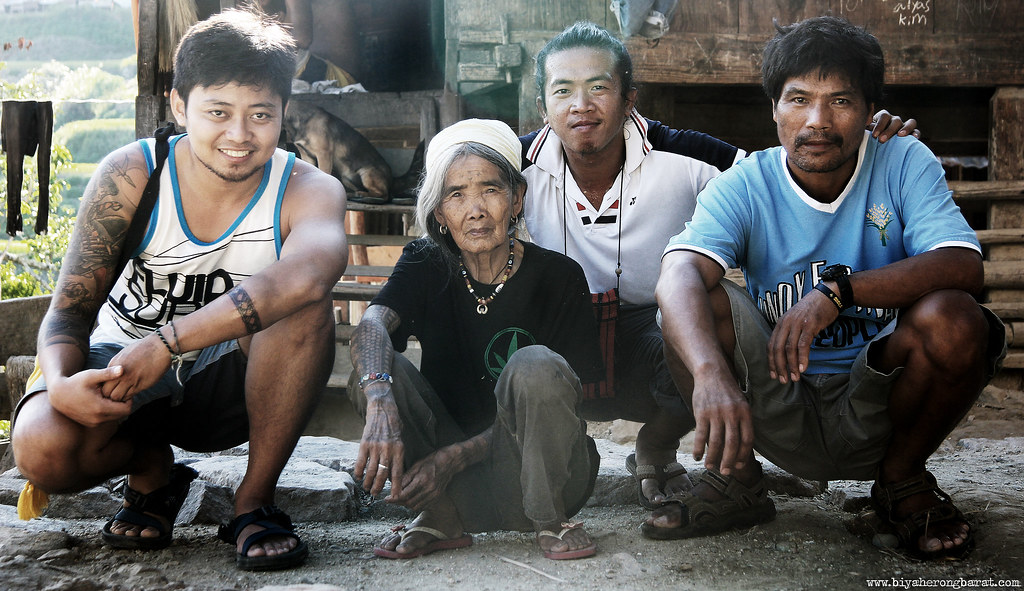



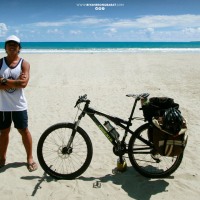
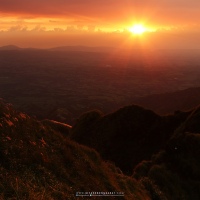

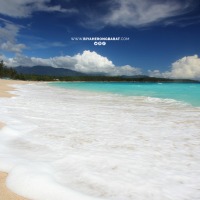
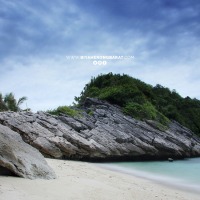




Oh my! Papunta din ako Kalinga first week ng August..
Dunno if I could brave myself to get a tattoo, but I might do it finally.
First tattoo and all that.
Beautiful photo compositions as always! 🙂
Hello Francis,
That’s nice. I’m sure magugustuhan mo dun sa Kalinga. My first tattoo was tough, pero tingin ko kaya mo yan. And besides, solid yun, si Fang-Od pa bibinyag sa ‘yo. I support you, my friend. Go!!!
Thank you very much. =)
“Wow” – that’s my reaction when i saw the tattooing part of this blog.
Great composition as always sir! :]
Hello Geejay,
Thank you very much. I’m glad you like the photos.
You have a great blog, man. Astig!!!
Cheers for more travels and to our beautiful country.
Astig! Binisita ni Byaherong Barat ang blog site ko :]
Salamat Sir! Cheers! Let’s both keep on posting.
Cheers, my friend!!
ganda sir ^^
Maraming salamat, Kicko! =)
wahhh gusto ko makarating dyan ang ganda sobra.. wanna have a tattoo din from her! 🙂 super like ! keep it up Byaherong barat 🙂 ganda po ng blog nyo 🙂
Hello Anesh,
Go. Kaya mo rin makapunta diyan.
Thank you very much, I’m glad you like it. =)
The lady eating lunch is a beautiful photo. No words. 🙂
This post made me miss Sagada even after being there several times. I’ve attempted to add Batad and Buscalan to my itinerary twice but failed. 😦 Third time may be the charm, and I may just be brave enough to get my first tattoo. 🙂
Hi Mel,
Opposite naman nangyare sa akin. Sagada naman ang failed ko lagi, I’ve been in the Cordilleras twice, never pa kong naka-apak sa Sagada. I’m going this November, and I will make sure makakapag-Sagada na ko.
“Third time may be the charm”
Kayang kaya mo yung tattoo. Actually, I have problem with needles and blood, and I was on the brink of fainting. Mahina pain tolerance ko with needles, sa lahat ng tattoo ko laging ganon nangyayare. hehehehe.
Haha, yes, third time’s the charm. 😀 Let’s exchange notes then. I go back to Sagada every year pero on hold muna because of the tiny bun in the oven. ;D If I survive the pain of childbirth in January, am sure tsiken na lang ang tattoo saken. Lol! Then I will hike to Buscalan next year and get a tattoo from Fang-od. Sana bigyan pa sya ng mahabang buhay ni Kabunian. 🙂
Nice. Congratulations on your new baby. =)
Oo, pagaling ka pala muna before ka umakyat ng Buscalan. I’m sure maabutan mo rin si Fang-Od, she’s a very strong woman for a 93 year old. =)
good blog, thanks
Thanks, Ruel =)
Pingback: Mountain Province: What’s In Bontoc? | Biyaherong Barat
Hello Sir,
We just might be rented to shuttle guest for Buscalan sometime October. We will bringing passengers vans like Nissan Urvans, may I ask if our vans can make it to Bugnay junction near the trail leading to Buscalan? Likewise, will it be possible/safe to leave the vehicles near that trail? I want to experience and see what saw in that village too. Great Blog. Thanks
Hello Emmanuel,
Thank you very much.
I’m not sure if you could leave the van at Bugnay Junction but, there’s a nearby village, it’s Mar-O (along the highway), I think it’s safer there. When we went to Buscalan, we hitched a jeepney until half the trail, the road was passable but it looks tough. I’m not really sure about the risks of bringing the van all the way there.
By the way, we will be taking the route from Sagada via Bontoc to Tinglayan. Thanks po
The road is quite prone to landslides so please be extra careful.
Thank you for taking time to reply and thank for the suggestions and caution/warning as regards the landslide. I also talked to Journeying James too, because he is one of our regular client and told me almost the same thing.
Well my clients from Cebu have not confirmed yet, but we will be ready thanks for you input.
Thank you, keep safe and more travel for both of us. God Bless
This was a great read sir Jed. Glad that there are still people like you who treasures Filipino cultures.
Sir Jed this help a lot am planning to go to kalinga and meet Apo Fang Od. Summer 2014 is my plan so thankful i found your blog. I really dont have any idea how to ge there but with this, YES!!!thank you so much.
Glad to help, Troy. Have a safe trip. =)
sir this blog was very helpful. im planning to have a tat by whang od for years now, and im finally doing it this october, if i may ask, coming from pampanga, where is my first destination? would it be to baguio of nueva viscaya? and how did you find the tour guide?
Hello Angelo,
Naku, ‘di ko sure if from Pampanga, a. Pero try mo contactin yung Victory Liner kase ‘di ko maalala kung nag-Dau kami o Mabalacat, e. Nakatulog kase ako nung papunta, e. Basta yung bus papuntang Tabuk City, Kalinga yung bus na yun.
Yung sa guide, ang una naming kinontak si Francis Pain, kaso busy siya nun so naghanap kami ng ibang guide sa Tinglayan, dun namin nakilala si Kuya Amfat, ni-refer sa amin sa Luplupa Riverside Inn. Dun din kami nagstay nung first day, madali na maghanap ng mag-gaguide sa inyo dun.
http://biyaherongbarat.com/2013/07/16/tinglayan-kalinga-on-the-banks-of-the-chico-river/ <— ito yung ginawa ko about Tinglayan.
Sana makatulong 'to. Hehehe.
Ngayon lang ako napadaan sa site na ‘to, at grabe. Parang treasure box na puno ng magagandang surpresa at treasure key for opening minds sa ganda ng pilipinas in terms of travel destinations! keep up the good work sir! 🙂
Maraming salamat, Ehdz. =)
Ang ganda ng photos mo kuya. Sana magka-courage akong magpatattoo pagpunta ko this month. 🙂 Salamat sa post!
Hello Janis,
Salamat! Kayang-kaya mo ‘yan. Kung kinaya ko yun, I’m sure kaya mo rin yun. Ako, mahina tolerance ko for needles but I survived. Hehehe. Sigurado ako, mas kaya mo. =)
Enjoy your trip. =)
Salamat po! Question pala: may signal ho ba dun? Loser na tanong hehe sorry
Hello Janis,
Haha. Ok lang po. Wala pong signal pagdating dun sa Buscalan.
Hi Sir! may I ask kung yung ginagamit ni Whang Od na pomelo thorn in tatooing is bago, I mean, different customer, different pomelo thorn din? binabalak ko din po kasing mag trek to Kalinga and get a tatoo from Whang Od. I’m just wondering lang po..for health purposes.. Thank you very much sir!
Hi Cristina,
Opo. Actually, yung ginamit na tools during your session, souvenir mo yun. It’s safe, so far, I’m alive and well. hehehe. Enjoy your trip. Be safe. =)
Been reading a lot of Fang-od blog posts lately and I must say, this one stands out! Great composition and photos! Excited for our first adventure and getting inked this 2014! Weee!
Hello Kate,
Thank you for the kind words. Deeply appreciated. I’m sure you’ll enjoy this one unforgettable experience. Ingat and enjoy. =)
One of the best blog about Fang-od. Very hearty. Keep it up man!
Thank you for the kind words jepepips. you too bro.
Hi,
Great story. Outstanding photos! I’m planning to visit Banaue this Holiday and still considering a trip to Kalinga to get inked 🙂
Pwede ba malaman kung paano makapunta sa Tinglayan from Manila and or from Banaue.
Salamat 🙂
Pingback: Tinglayan, Kalinga: Simple Life in Buscalan | Biyaherong Barat
o my…wonderful story. I am wanting so much to meet Apo Fang Od…and this page is very helpful for a first time traveler like me..I can imagine the walking and the pain of the tattoo…but i am excited. Hope to write another beautiful story after coming down from Apo’s place.
Maraming salamat Astrid. I’m sure you’ll find something beautiful to write about during your trip to Kalinga. It’s a wonderful place, not only the tattoo, but also the community, its people, the location, everything. =D enjoy your trip. =)
sa samoa manomano din ang pero ganda gawa ang needle na ginagamit stainless steel saka ink. pmunta nga dun c Ami James ng miami ink
Nice
Hi! Someone shared this link sa FB. I must say ang gaganda ng mga photos… Awesome tattoos. I am from Kalinga (proud one) but unfortunately, I haven’t been in Tinglayan. My family is from Tabuk (city proper). It makes me proud sa posts mo :)) Thanks for appreciating our culture. Hopefully, I can arrange to visit Buscalan soon.
Maraming salamat po Levitalks. ‘Yan po yung una kong visit nung 2013, ito po nung 2014 http://biyaherongbarat.com/2014/12/17/tinglayan-kalinga-simple-life-in-buscalan/ napabalik po ako di lang dahil sa tattoo pero pati na rin sa ganda ng lugar, at naenjoy ko rin po kase ang simpleng pamumuhay dun. Napakaganda po ng hometown niyo, sir. Sabi ko nga nung unang apak ko ng Kalinga, nung Biyahe ko mula Tabuk to Bontoc at vice versa, sabi ko parang nasa pelikula ako nung nakita ko yung mga mountains.
Hello kuya, babae ako! haha 🙂 Chineck ko ung 2014 post mo, ang ganda talaga ng photos mo! Anung cam gamit mo? Mukha nga na nag-enjoy ka sa post and for you to go back. Though, may mga narinig akong social issues ngayun about sa commercialization ng place at ‘yung culture. Totoo ba? Uwi ako ng May so probably try namin pero delikado if May kasi election time. Tignan ko pa! Cheers! – Levi
Ay sorry po ma’am levi. Yup. Sabi nga rin po sa akin, nabalitaan ko po may mga tour tour na rin dun.
Pingback: Tattoos, Fantasy and Dystopian Religions | Annie LaHue
Pingback: I Never Thought Being 31 Could Be This Fun – Jesar Gacula
Pingback: I Never Thought 31 Could Be This Fun – Jesar Gacula
Hi sir! Is it safe to travel alone? I’ll be travelling from Baguio. Thanks!
Yes, ma’am. safe po.
Wow! As always, your blog po is so amazing. 🙂
Plan din po naming pumunta and magpatattoo this year.. First time namin kaya nakakakaba.. >_<
Thanks po sa pag-share.. Ang ganda ng mga photos.. 🙂
Maraming salamat Joie D., kaya niyo yan.
Hi, Kelan kaya tayo magkakasalubong sa daan:)
thanks for this post. Panalo mga picture dude. Nakakapressure. Ang galing ng lalaking version ni barat.
Hi Bro,
Its amazing to read your experience, and the photos you shared here really set my mind that I have to visit this place thou.. This coming august Im travelling to northern Luzon for one week which include Sagada, Mainit, Banaue and Batad , and definitely will add Kalinga/ Luplupa village into my itinerary. However, one question: will it be easy to communicate with locals of this mountain region/ ifugao in English, as I do not speak tagalog. What about kuya Gilbert? I definitely will look forward for a local guide there as Im travelling solo.
Many thanks for your help.
Hafiz
Kuala Lumpur
Hello Hafiz G, that’s a wonderful itinerary. yep, communicating with them in English is actually much convenient than Tagalog, as they have a different dialect up north.
Pingback: Tinglayan, Kalinga: A Memento From The Mambabatok of Buscalan — Biyaherong Barat – mister.bogus
Hi,
I shared your blog on my blog hope you wouldn’t mind.
Regards,
https://misterbogus.com/